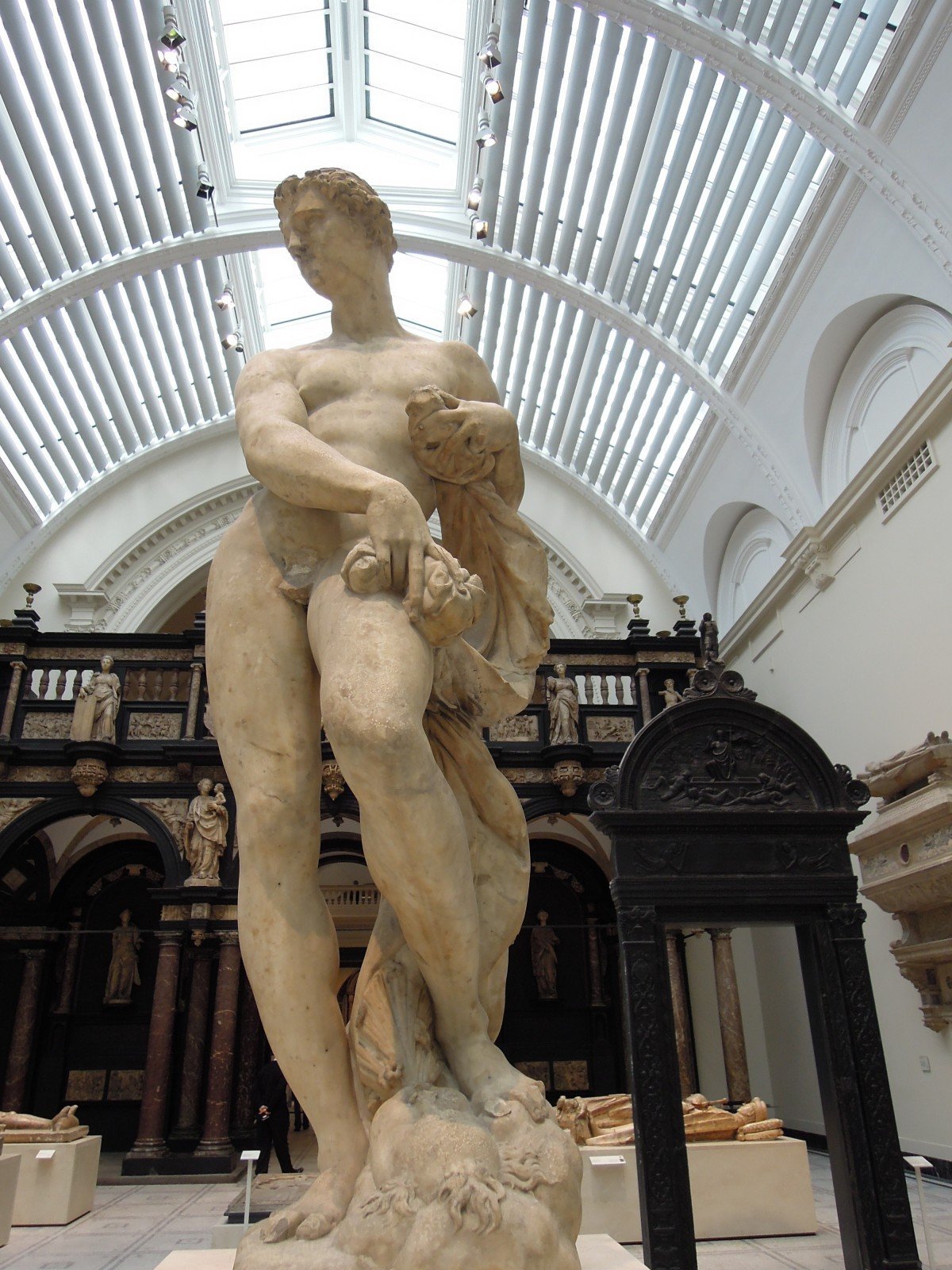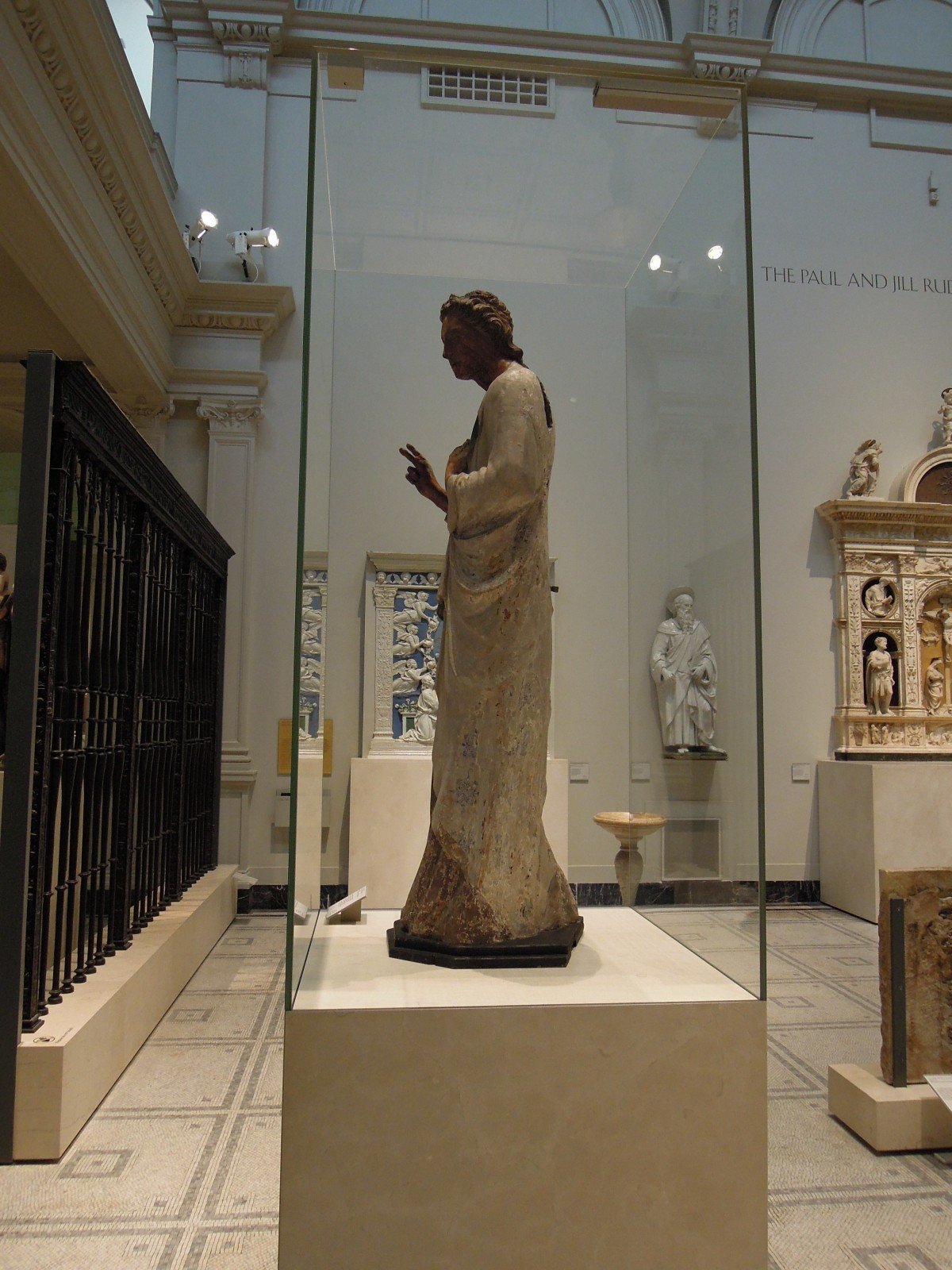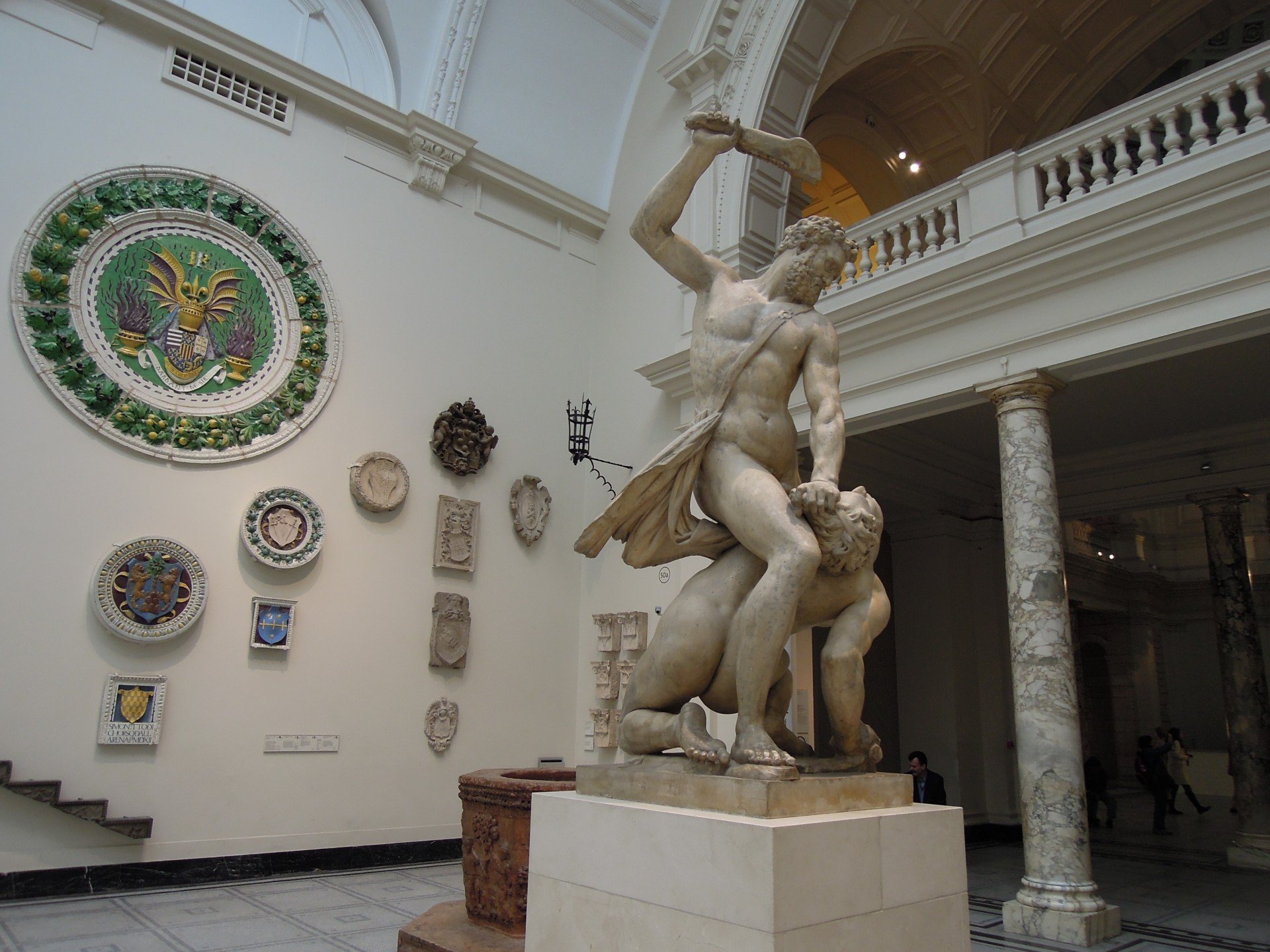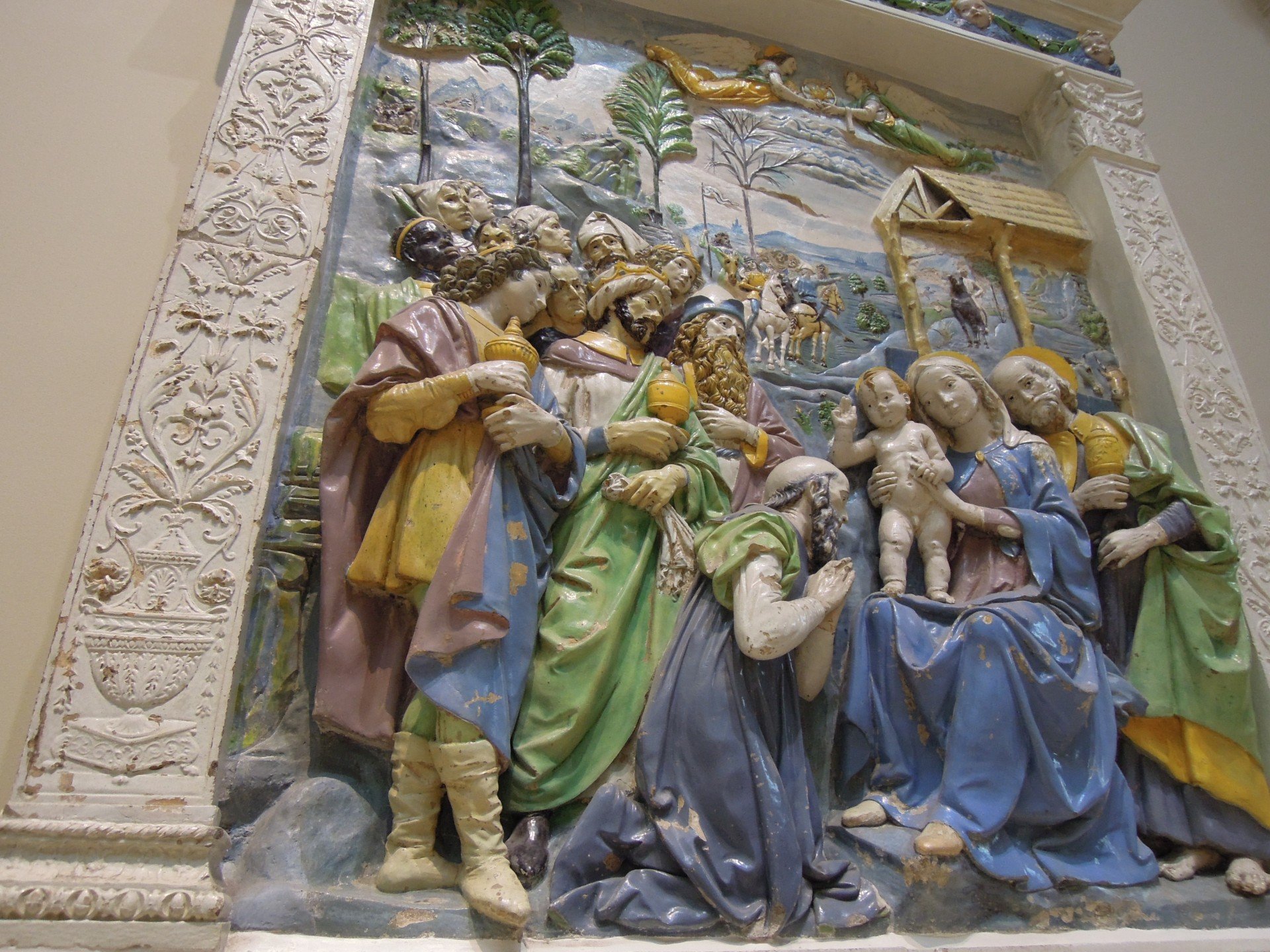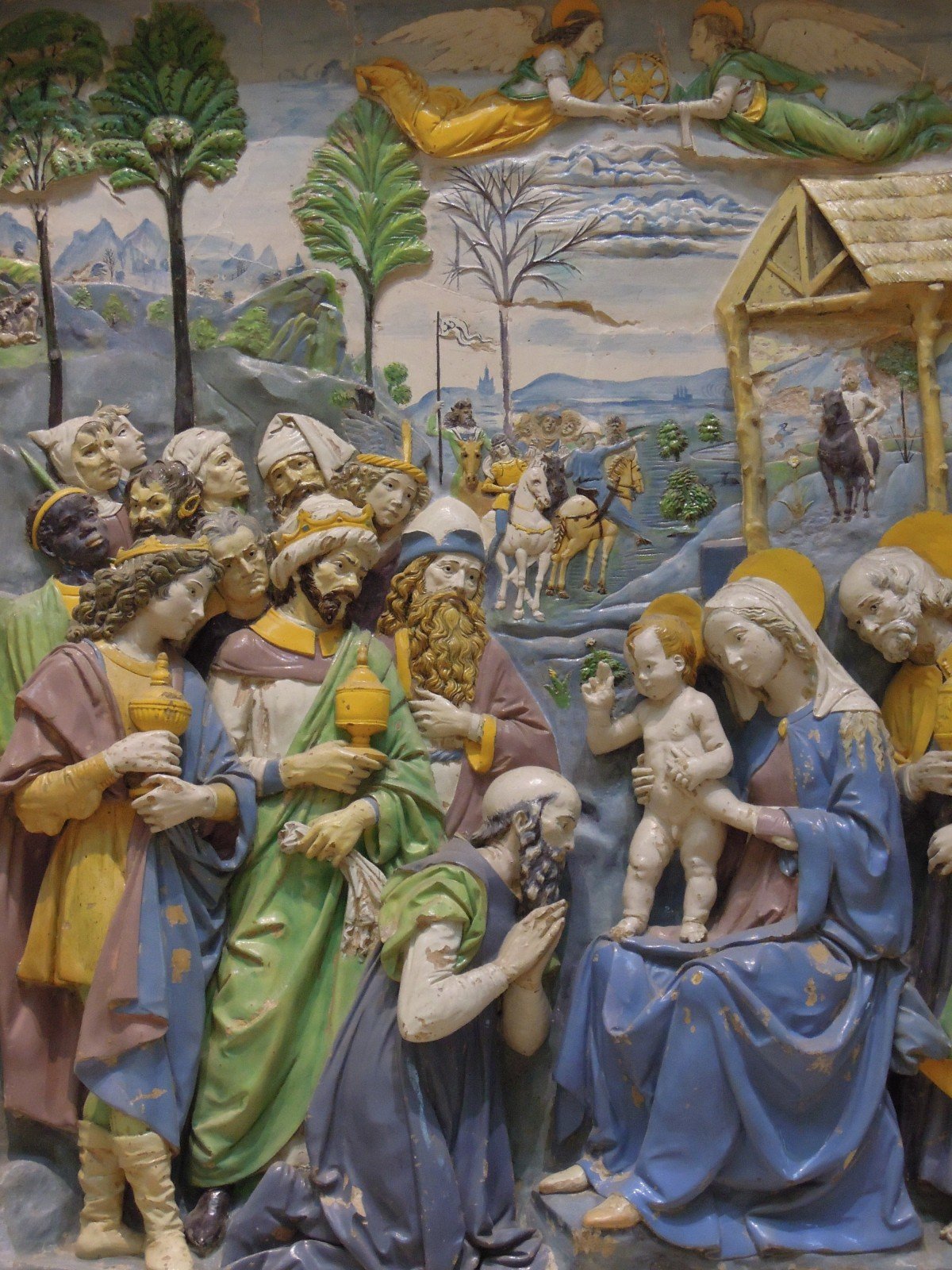Homesickness: the masterpiece by Andrea della Robbia in the Paul and Gill Ruddock Gallery at the V&A
- “Zephyr”, 1576, Pietro Francavilla
- “The Angel Gabriel from the Annunciation”, about 1530-68, probably by Nino Pisano
- “Samson slaying a Philistine”, about 1562, Giovanni Bologna called Giambologna
- St. Stephen, about 1500-20, workshop of Benedetto Buglioni.
- Room n.50, the Paul and Jill Ruddock Gallery, Victoria & Albert Museum
- “The adoration of the King”, about 1500-10, Enamelled terracotta, Andrea Della Robbia, 1435-1525
- “The adoration of the King”, about 1500-10, Enamelled terracotta, Andrea Della Robbia, 1435-1525
- “The adoration of the King”, about 1500-10, Enamelled terracotta, Andrea Della Robbia, 1435-1525
There is a room, n.50 in the Victoria & Albert museum, dedicated to a spectacular collection of Italian Renaissance sculpture. It is named The Paul and Jill Ruddock Gallery. Sir Paul Ruddock, member of the V&A trustees, is indeed the lead donor for the renovation of the Medieval & Renaissance Galleries in the museum. On display, you can see not only very famous masters, such as Perugino and Giambologna, but also pieces by artists whose names are familiar to the general public, yet whose works are not really well known.
Among the finest works in the hall, there is a masterpiece by Andrea della Robbia. Quoting the description of the V&A, it is an altarpiece made in Florence in the early 16th century. The composition is related to that of a number of Umbrian paintings of the Adoration of the Magi, the most important being an altarpiece by Perugino at the Pinacoteca Nazionale in Perugia (about 1475). The arms are those of Albizzi, and the altarpiece may have been commissioned for the church of Saint Michele or the one of Saint Andrea in Rovezzano, both of which were under Albizzi patronage at the end of the 15th century. The Della Robbia’s was an Italian family of sculptors and potters. They were active in Florence from the early 15th century and elsewhere in Italy and France well into the 16th. Family members were traditionally employed in the textile industry, and their name indeed derived from rubia tinctorum, a red dye.
Luca della Robbia founded the family sculpture workshop in Florence and was regarded by contemporaries as a leading artistic innovator, comparable to Donatello and Masaccio. The influence of antique art as well as his characteristic liveliness and charm are evident in such works like the marble singing-gallery in the Florence Cathedral. He is credited with the invention of the tin-glazed terracotta sculpture for which the family became well known. His nephew Andrea della Robbia, who inherited the workshop, tended to use more complex compositions and polychrome glazing rather than the simple blue-and-white schemes favoured by his uncle.
In general, after seeing the masterpiece by Andrea Della Robbia and the whole room, you might think that the collection is beautiful and that the layout is very adequate. You might also think that the Paul and Jill Ruddock Gallery allows you to have a rare experience: that of seeing, gathered in a few square meters, some great masterpieces of art. In the end, however, there is only an unanswered question: why are all these precious works of the Italian Renaissance in London (permanently) rather than in Italy?
July 15, 2015


